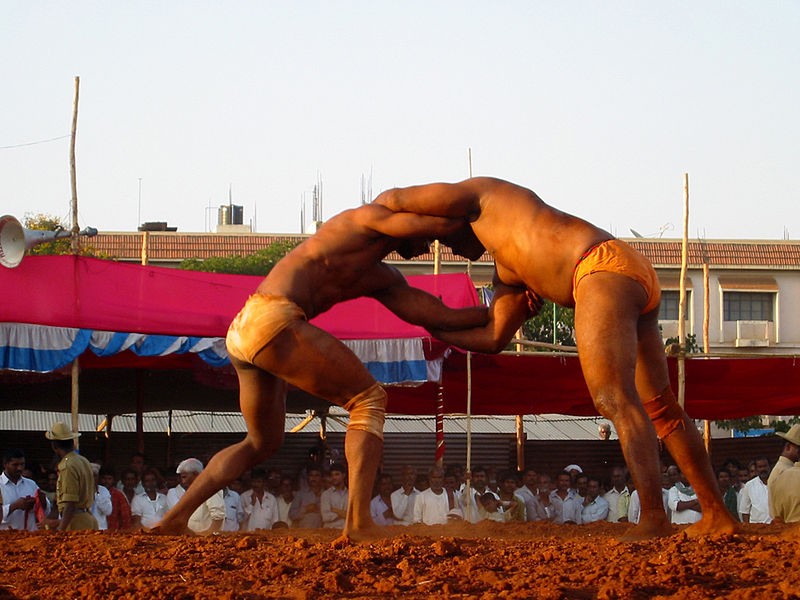
Kusti is a form of wrestling, one of the oldest sport in the world, practised even today in the form that it was by combatants since ancient times in the South Asian continent. The contestants are called pehelwaans and that is the reason it is called as pehelwaani in Pakistan. In India, it is called Kusti. For communities and villages, pitting their strongest man against another is a sport whose origins will certainly be difficult to trace. But the popularity of the sport seems to have escalated with the arrival of the Moghuls in India. To put it simply it is Mud wrestling.
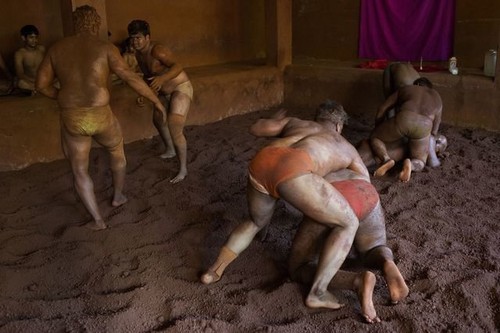
Betting, particularly when you have only two contestants in the arena, is a necessary evil for the sustenance of any sport. And so it is with this sport. The money that changes hands in these contests far exceeds the prestige that is at stake for the two contesting sponsors, mostly far-flung villages. The contest can last anywhere from 30 minutes to longer. The bouts, unlike modern wrestling, are non-stop without any breaks. Sometimes wrestlers take on a challenge without a break. declining a challenge is interpreted as cowardice. The intervillage contests are usually held on festive occasions and the wrestling meets are called Dangal (wrestling competition)
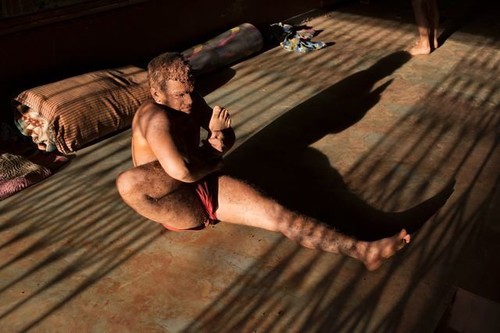
These wrestlers or pehelwaans undergo rigorous training and regimen from a very young age. Much like Sumo, they join Akhara’s, another word for wrestling gyms. Here these wrestlers lead a life akin to that of ascetics. They have a rigorous regimen to tone and build up their muscles and adhere to a strict diet. They, more often than not cook and eat together. In training these wrestlers practice the ancient art of malla-yudha (a martial art involving punching, biting, breaking of joints, chocking and striking pressure points) and the Persian wrestling art of varjesh-e bastanil. The latter form was introduced after the Moghuls got a hold in Northern India.
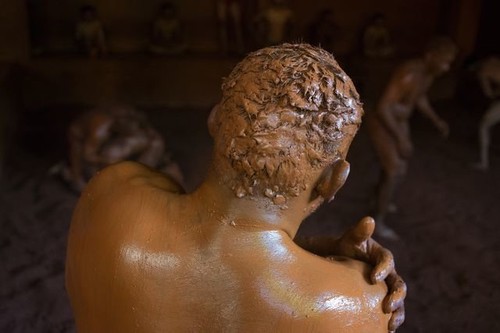
While India is infamous for the discrimination of societies and communities on caste basis, this kind of bias does not exist in the akharas. Each is treated with respect by the other members of the akhara and these men abstain from smoking, consuming alcohol and sex. Their training goes beyond expertise in wrestling in the sense that it encompasses moral, spiritual and ethical dimension. The wrestlers worship Lord Hanuman renowned for his enormous strength.
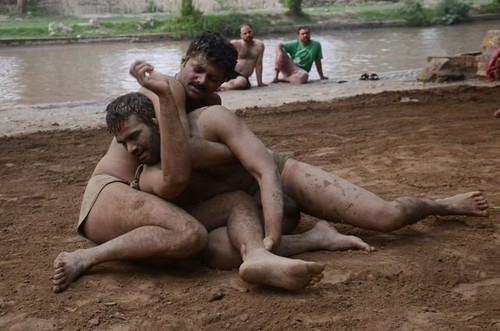
Prior to about, which takes place in a ring on a dirt floor on which mud has piled the wrestlers, or pehelwaans cost their body with mud, ochre turmeric, oil and sometimes with buttermilk and ghee. The aim of each contestant is to pin the opponents back and waist to the floor simultaneously. Other ways emerging a victor are either with the opponent surrendering, which is rare or by a knock out achieved more often than not by a stranglehold. The slimy and slithering contestants have to battle it out to the finish. There are no technical knockouts like we have in modern day wrestling today.
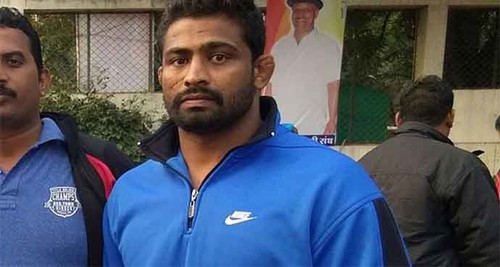
Just last week a popular wrestler, Ravi Kumar Barod, died of a cardiac arrest after two back to back bouts. He was one of the main attractions of the tournament (dangaal, as it is called) in Bhind, Madhya Pradesh India.. Crowned as the Madhya Pradesh Kesari (meaning various things from lion to the all-conquering in various languages), for seven years in a row he was a medal winner in the Nationals. The 26-year-old wrestler insisted on taking a third wrestler after having overcome the first two. Looking tired after the first two bouts, he spurned the doctor’s advice not to take on another combatant. Immediately as he took on the contestant, he vomited and collapsed. He was pronounced brought dead at the closest hospital.
Comments